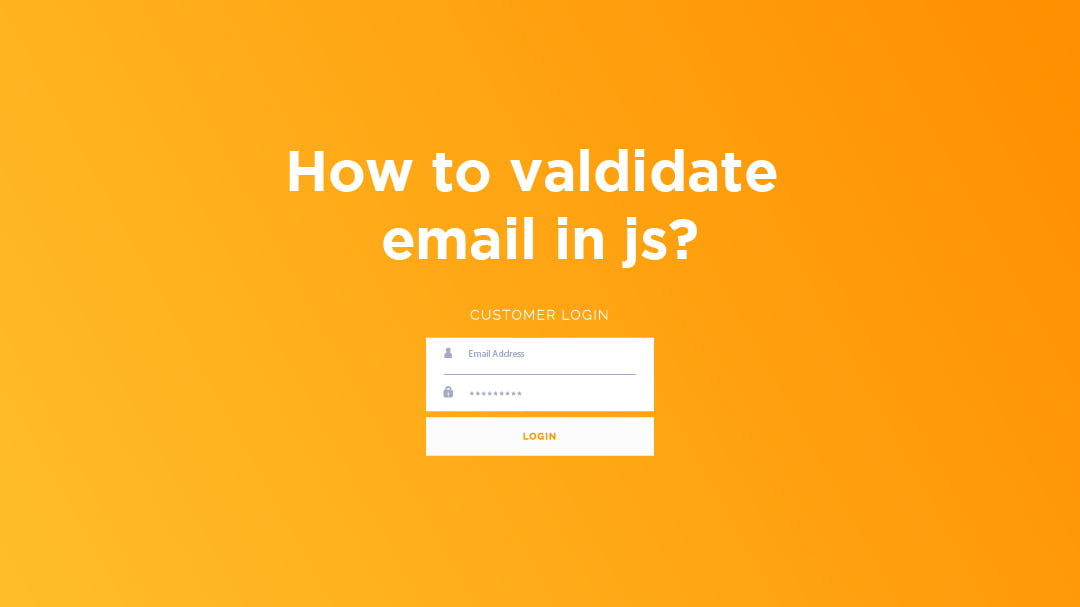Email validation is a crucial aspect of web development when it comes to ensuring data integrity and user experience. Whether you’re building a registration form, a subscription service, or any application that requires user input, validating email addresses is essential to prevent errors and improve overall usability. In this article, we will explore various methods and techniques for validating email addresses using JavaScript.
Quick Piece of Code for Developers
function validateEmail($email) {
var reg = /^([A-Za-z0-9_\-\.])+\@([A-Za-z0-9_\-\.])+\.([A-Za-z]{2,4})$/;
return reg.test($email);
}
Codepen Example
See the Pen How to validate email in js? by Woocoders Ecommerce Solution (@Woocoders-Ecommerce-Solution) on CodePen.
Why Validate Email Addresses?
Validating email addresses serves multiple purposes:
Basic Email Validation with Regular Expressions
One of the most common ways to validate email addresses is by using regular expressions. Regular expressions are patterns that describe specific sets of strings. While they might seem complex at first, they are highly effective for validating email addresses.
Here’s a simple example of an email validations using a regular expression in JavaScript:
function validateEmail($email) {
var reg = /^([A-Za-z0-9_\-\.])+\@([A-Za-z0-9_\-\.])+\.([A-Za-z]{2,4})$/;
return reg.test($email);
}
Using HTML5 Input Types
HTML5 introduced new input types, including “email,” which helps in browser-based validation even before the form is submitted. Although it’s not a substitute for server-side validation, it’s a quick way to provide immediate feedback to users.
<input type="email" id="userEmail" required>
Utilizing JavaScript Libraries
Several JavaScript libraries can simplify email validation by providing pre-built functions and utilities. One such popular library is “validator.js.” To use it, you’ll need to include the library in your project (usually via a package manager) and then apply its email validation function:
const validator = require('validator');
function validateEmail(email) {
return validator.isEmail(email);
}
MX Record Validation
For more advanced email validation, you can check the existence of the email’s domain by querying its mail exchange (MX) records. While this method requires server-side communication, it offers a more thorough validation approach:
const dns = require('dns');
async function validateEmail(email) {
const [, domain] = email.split('@');
try {
const mxRecords = await dns.promises.resolveMx(domain);
return mxRecords.length > 0;
} catch (error) {
return false;
}
}
Conclusion on How to validate email in js?
Validating email addresses in JavaScript is a crucial step in ensuring data accuracy, user experience, and security. By using a combination of client-side techniques like regular expressions and HTML5 input types, along with server-side validation methods involving libraries and MX record queries, you can implement robust email validation mechanisms.
Remember that no validation method is foolproof on its own. Combining both client-side and server-side validation offers the best protection against incorrect or malicious email inputs. As you develop your applications, strive for a balance between usability and security to provide a seamless experience for your users.
Email validation is crucial in JavaScript to ensure the accuracy of user-provided data, enhance user experience, and prevent security vulnerabilities. Proper email validation helps maintain data integrity and prevents errors caused by incorrect or malicious inputs.
Email addresses should be validated as soon as they are entered by users and before any critical actions are performed using those addresses. Additionally, consider periodically verifying the validity of stored email addresses, especially for systems that involve email communication.
Both client-side and server-side validation have their roles. Client-side validation provides immediate feedback to users, improving user experience. However, server-side validation is essential for ensuring data accuracy, preventing malicious inputs, and offering a more comprehensive validation process. A combination of both approaches is recommended for optimal results.
Share this post:
